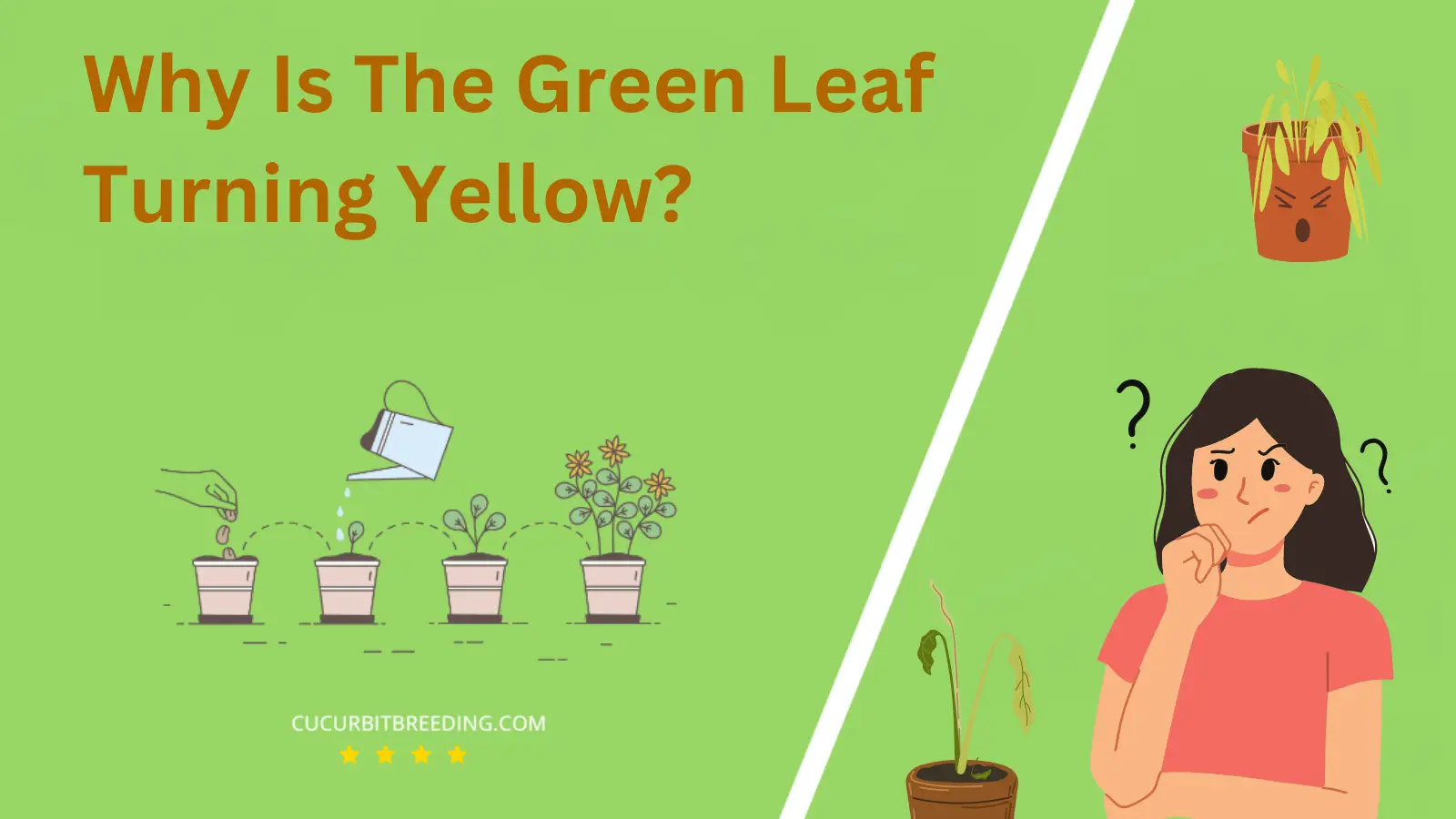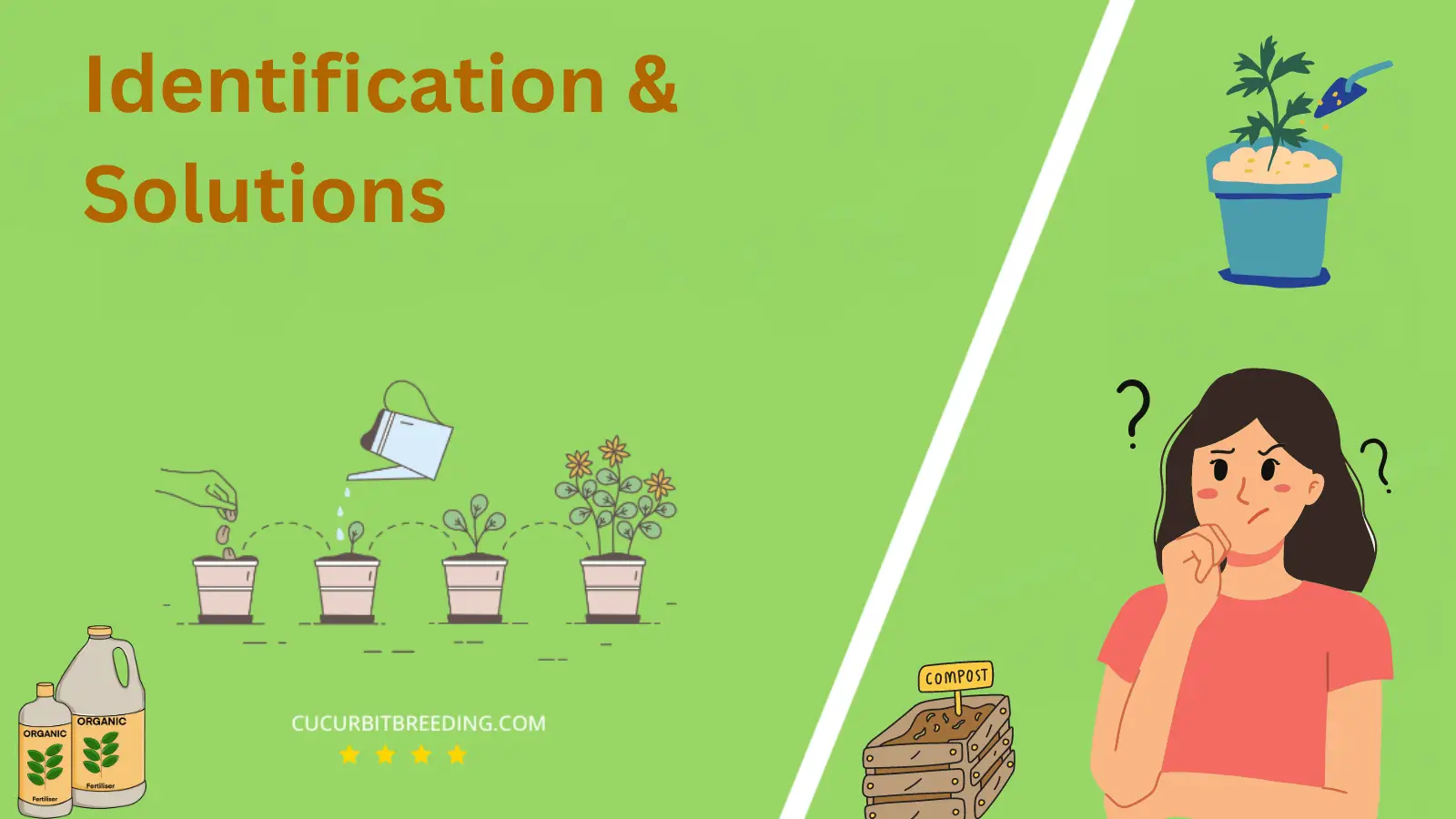
“Why is the green leaf turning yellow?” This question could hint at a fundamental shift occurring in your beloved garden. Leaves, those vibrant symbols of life and growth, don’t change their color without a reason.
Is it a seasonal effect, a warning signal, or a natural phenomenon? While you may be anxious for an immediate explanation, understanding the mystery behind the transformation requires delving deeper into the world of botany. So let’s embark on this fascinating journey together.
Why Is The Green Leaf Turning Yellow?
1. Nutrient deficiency
| Description | causes chlorophyll degradation, leading to yellow coloration in leaves. |
|---|---|
| Solution | Increase nutrient supply through fertilization or adjust pH levels to optimize plant absorption. |
Leaves turning yellow can, often, be a sign of nutrient deficiency, which means the plant isn’t receiving the proper balance of certain key nutrients. This condition can be detrimental, as it may limit the plant’s ability to produce chlorophyll. A lack of chlorophyll can cause the green leaf to turn yellow, a condition known as chlorosis.
Nutrient Deficiency Implications
The absence or insufficient amounts of certain nutrients like nitrogen, iron, and magnesium often cause chlorosis. These nutrients directly take part in the synthesis of chlorophyll, a pigment responsible for the green colour of leaves. With a lack of these nutrients, plants can’t produce enough chlorophyll, resulting in yellow leaves.
Addressing Nutrient Deficiency
To rectify this issue, you should first determine which nutrient is lacking. If possible, conduct a soil test. Alternatively, you can add a general-purpose fertilizer that covers a wide range of nutrients if determining a specific nutrient is unfeasible. Regularly applying compost can also enrich the soil with a variety of essential nutrients.
Proper Care and Maintenance
Apart from addressing the nutrient deficiency, it is crucial to provide the plant with the correct levels of sunlight and water according to its species-specific needs. Overwatering and underwatering, both, can lead to yellowing of the leaves. Proper maintenance can help your plant remain healthy and green.
2. Overwatering or poor drainage
| Description | causes root suffocation, leading to reduced nutrient absorption and chlorophyll breakdown, resulting in yellowing leaves. |
|---|---|
| Solution | Improve drainage to prevent overwatering. |
Overwatering or poor drainage can lead to yellowing of a plant’s leaves. Plant roots require access to oxygen to function properly. When they are surrounded by excess water, the oxygen supply gets hindered. This leads to root damage, impeding their ability to absorb nutrients effectively, which in turn leads to unhealthy, yellow leaves.
To remedy this, first, check the drainage of your plant’s pot. If water sits for too long, it’s a sign of poor drainage and you need to improve it immediately. You can drill more holes if needed. For overwatering, you need to regulate your watering routine. Every plant has different water needs, consider these needs and adjust the watering routine accordingly. Consult guides or speak to a horticulturist to understand the exact requirements of your plant type.
Additionally, include a balance of wet and dry periods to allow the roots to soak up water and breathe. Remember, water your plants when the top inch of the soil is dry. Lastly, never let the plant sit in water, empty any excess water in the saucer to prevent roots from rotting. Following these steps will ensure healthier roots and in turn, green, vibrant leaves.
3. Pest infestation
| Description | The green leaf turns yellow due to pest infestation, affecting its physiological processes. |
|---|---|
| Solution | Apply organic pesticide to eliminate pests and promote healthy leaf growth. |
When a green leaf starts turning yellow, it could indicate a pest infestation. Pests can stress the plants, leading to discoloration due to the damage they cause to the plant tissues. Certain pests like aphids, spider mites, and scale insects, suck the plant sap, weakening the plant and causing leaves to yellow and eventually drop off.
First thing you can do to resolve this issue is to identify the type of pest that is attacking your plants. Once identified, you can use suitable natural pesticides, or insecticidal soaps, to effectively manage these pests.
In addition to using pesticides, introducing beneficial insects into your garden can be particularly useful. These insects, including ladybugs, lacewings, and predatory mites, are natural enemies of many pest species and can help in controlling the pest population.
Lastly, keep your plants healthy through proper watering, fertilization, and pruning. Healthy plants are more resistant to pest infestations and can recover more quickly from any damage.
Remember, the key is to act swiftly once you notice a pest problem. The faster you take action, the higher the chances of saving your plants. Pests can rapidly spread across a garden if left unchecked, so early detection and management are crucial.
4. Disease or infection
| Description | The green leaf turns yellow due to pest infestation, affecting its physiological processes. |
|---|---|
| Solution | Apply organic pesticide to eliminate pests and promote healthy leaf growth. |
When a plant is infected with a disease or invaded by pests, the green leaves may turn yellow. That’s because the disease, be it fungal, bacterial, or viral, or the pests might be obstructing the process of photosynthesis. This can lead to the degradation of chlorophyll, which gives leaves their green color, hence the yellowing.
Attachment from pests like mites, aphids, or nematodes can cause similar effects. They extract vital nutrients from the plant, which can hinder its growth and also lead to yellowing.
To resolve this problem, you should begin by identifying the type of pest or disease affecting the plant, which can usually be done by inspecting the plant and its symptoms, or consulting a plant disease diagnosis guide or expert. Once you’ve identified the disease or pest, you can treat it accordingly. For diseases, it may be necessary to apply a suitable fungicide, bactericide, or virucide. For pests, introduce beneficial insects that prey on them, or apply a suitable pesticide. Most importantly, ensure that plants have proper growing conditions, as this strengthens their resistance to diseases and pests.

5. Environmental stress (excessive heat or cold)
| Description | Apply organic pesticide to eliminate pests and promote healthy leaf growth. |
|---|---|
| Solution | Provide adequate temperature control and avoid extreme heat or cold to prevent yellowing of leaves. |
Environmental stress, such as excessive heat or cold, affects the plant by destabilizing its photosynthesis process. In particular, heat stress can cause a rapid evaporation of water from the plant, affecting its turgor pressure and eventually causing the leaves to wilt and turn yellow. Cold stress, on the other hand, slows down metabolic and physiological activities, which can turn the leaves yellow as they lack the necessary nutrients for photosynthesis.
The best way to solve this problem typically involves adjusting the plant’s environment to something more suitable for its needs. For heat stress, provide shade to reduce the sunlight exposure, and ensure you’re watering the plant adequately to compensate for the extra water evaporation. When dealing with cold stress, move the plant to a warmer place if possible or protect it with plant covers during cold nights to trap warmth. It’s also recommended to minimize watering as the demand for water by the plant is low during cold stress.
6. Natural aging process
| Description | causes chlorophyll to break down, revealing other pigments like carotenoids and anthocyanins. |
|---|---|
| Solution | Increase nitrogen levels in soil to promote chlorophyll production, preventing natural leaf discoloration. |
One common reason a green leaf may turn yellow is due to the natural aging process. As leaves mature, the chlorophyll that gives them their green color starts to break down. This results in a gradual color change from green to yellow, a process known as chlorosis.
The yellowing of leaves due to aging is a natural phenomenon and is not a cause for concern. It’s simply a part of the plant’s life cycle and no specific action is required. However, if the yellowing appears in young leaves or is widespread throughout the plant, this can indicate health issues. In such situations, the plant’s health needs to be assessed for potential problems like nutrient deficiencies, watering issues, or disease.
To address the problem of nutrient deficiencies, you could provide the plant with a balanced plant food or fertilizer applicable to the specific type of plant. Incorrect watering—both overwatering and underwatering—can cause yellowing. Ensure the plant is getting the right amount of water by researching the specific needs of the plant species.
If disease is a concern, it could be beneficial to seek professional advice. A local extension service or a reputable nursery could provide valuable guidance. Remember, though, prevention is always better than cure. Good plant health maintenance practices can prevent many diseases.
7. Lack of sunlight or poor light conditions
| Description | reduce chlorophyll production, leading to yellowing of leaves due to decreased photosynthesis. |
|---|---|
| Solution | Increase exposure to natural or artificial light, aiming for at least 6-8 hours daily. |
One major reason why a green leaf might turn yellow is due to a condition known as chlorosis. Chlorosis is a deficiency in chlorophyll, the molecule within a plant that absorbs the sunlight required for photosynthesis. A chlorophyll shortage usually results from inadequate nutrition, specifically a deficiency of essential elements like nitrogen, iron, or magnesium. Without these inputs, chlorophyll production slows, causing the leaf’s green pigmentation to fade to yellow.
The simplest way to treat chlorosis is to ensure your plant has access to all the necessary nutrients. This usually means fertilizing your plants with a product rich in the deficient elements. To find the most suitable fertilizer, you may need to conduct a soil test to determine which nutrients your soil lacks. Additionally, check your plant’s water levels. Underwatering and overwatering can also interfere with nutrient uptake. Adjust your watering routine as necessary, ensuring the plant’s soil is kept consistently moist but not waterlogged. Also, correct the pH balance in the soil, as an imbalance can limit nutrient availability.